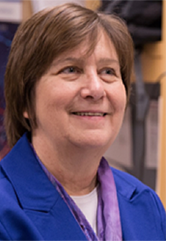The benefits
Students enrolled in graduate courses at the Harvard T.H. Chan School of Public Health represent diverse academic preparation and intended career tracks, illustrated in matrix form to prospective students. “No matter what part of the quadrant you are in, you can use your background and expertise in the classroom.” Small group activities like crafting arguments on both sides of an issue allow students to learn and collectively draw from each other's knowledge.
The challenges
New regulations for National Institutes of Health (NIH) T32 institutions (those that offer research training opportunities) require a formal workshop in rigor and reproducibility, which does not afford as many active learning opportunities. Wessling-Resnick uses transparency to combat perceived lower student interest and engagement: “I state up front that we’re all required to be here, so why don’t we make the best of it?” For this workshop, the NIH provided short situational films that promoted active student discussion.
Takeaways and best practices
-
Make yourself disappear.
According to Wessling-Resnick, the learning in pair-and-share discussions culminates in a pivotal point when students reach consensus and discuss their conclusions together, without the help of the instructor. “You have to be quiet for students to think. It took me a long time to be comfortable with silence and understand its importance.”
-
Incorporate peer perspectives in individual assignments.
In preparation for lab work, Wessling-Resnick has students write a proposal identifying a problem, hypothesis, method, and analysis plan—and shares each proposal anonymously for peer feedback. “In terms of the learning gain, this exercise is more beneficial than the act of writing the proposal.”
-
Acknowledge limitations of heterogeneity.
Wessling-Resnick and colleagues provide optional sessions outside of class for students to boost proficiency on specific concepts where they lack adequate background. Despite this effort, when enrollment numbers allow it can be beneficial to organize students into course sections based on similar backgrounds or goals.
Bottom line
Varied academic and professional experience poses an instructional challenge, but can also increase learning and student engagement. “Once you recognize that it’ll be impossible to teach at all levels, you develop ways to instill the essence.”
 Marianne Wessling-Resnick, Professor of Nutritional Biochemistry, employs active learning strategies including debate, ‘pair and share,’ and peer evaluation to bridge gaps in student experience and knowledge. “I have found that it is to my advantage to use the heterogeneity of the class as a tool.”
Marianne Wessling-Resnick, Professor of Nutritional Biochemistry, employs active learning strategies including debate, ‘pair and share,’ and peer evaluation to bridge gaps in student experience and knowledge. “I have found that it is to my advantage to use the heterogeneity of the class as a tool.”
